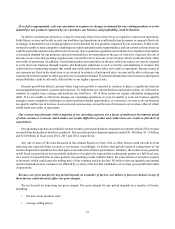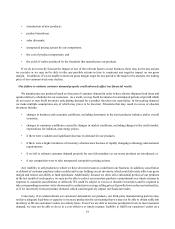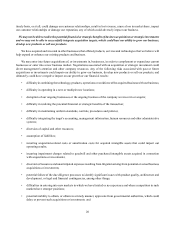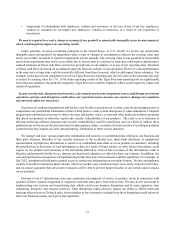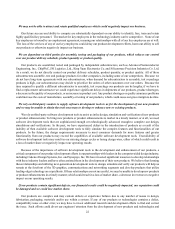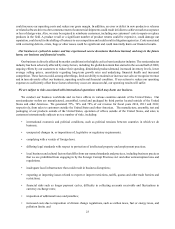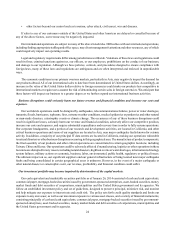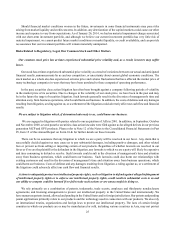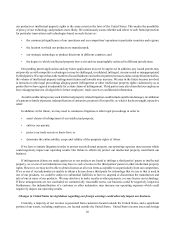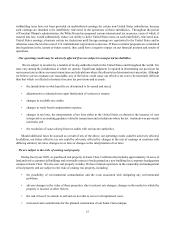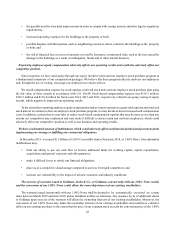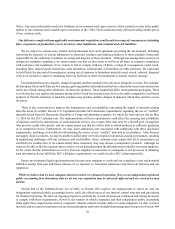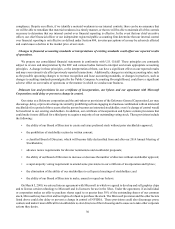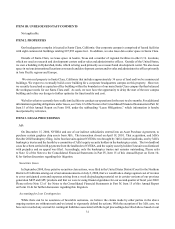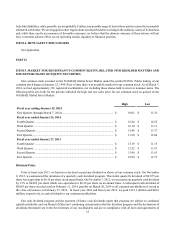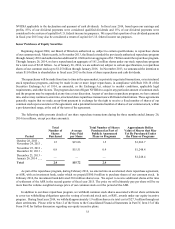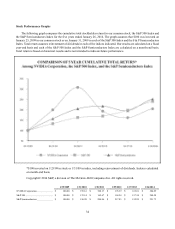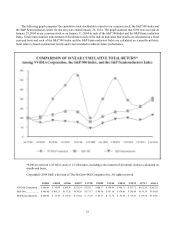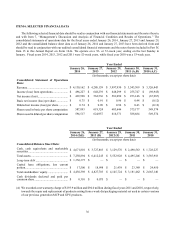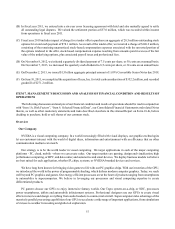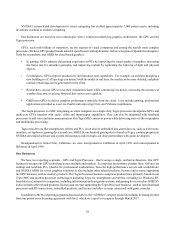NVIDIA 2013 Annual Report Download - page 172
Download and view the complete annual report
Please find page 172 of the 2013 NVIDIA annual report below. You can navigate through the pages in the report by either clicking on the pages listed below, or by using the keyword search tool below to find specific information within the annual report.28
• the possible need for structural improvements in order to comply with zoning, seismic and other legal or regulatory
requirements;
• increased operating expenses for the buildings or the property or both;
• possible disputes with third parties, such as neighboring owners or others, related to the buildings or the property
or both; and
• the risk of financial loss in excess of amounts covered by insurance, or uninsured risks, such as the loss caused by
damage to the buildings as a result of earthquakes, floods and or other natural disasters.
Expensing employee equity compensation adversely affects our operating results and could also adversely affect our
competitive position.
Since inception, we have used equity through our equity incentive plans and our employee stock purchase program as
a fundamental component of our compensation packages. We believe that these programs directly motivate our employees
and, through the use of vesting, encourage our employees to remain with us.
We record compensation expense for stock options, restricted stock units and our employee stock purchase plan using
the fair value of those awards in accordance with U.S. GAAP. Stock-based compensation expense was $136.3 million,
$136.7 million and $136.4 million for fiscal years 2014, 2013 and 2012, respectively, related to on-going vesting of equity
awards, which negatively impacted our operating results.
To the extent that expensing employee equity compensation makes it more expensive to grant stock options and restricted
stock units or to continue to have an employee stock purchase program, we may decide to incur increased cash compensation
costs. In addition, actions that we may take to reduce stock-based compensation expense that may be more severe than any
actions our competitors may implement and may make it difficult to attract retain and motivate employees, which could
adversely affect our competitive position as well as our business and operating results.
We have a substantial amount of indebtedness which could adversely affect our financial position and prevent us from
implementing our strategy or fulfilling our contractual obligations.
In December 2013, we issued $1.5 billion of 1.00% Convertible Senior Notes due 2018, or 1.00% Notes. Our substantial
indebtedness may:
• limit our ability to use our cash flow or borrow additional funds for working capital, capital expenditures,
acquisitions and general corporate and other purposes;
• make it difficult for us to satisfy our financial obligations;
• place us at a competitive disadvantage compared to our less leveraged competitors; and
• increase our vulnerability to the impact of adverse economic and industry conditions.
The exercise of warrants issued to Goldman, Sachs & Co., or Goldman, concurrently with our 1.00% Notes would,
and the conversion of our 1.00% Notes could, dilute the ownership interest of our existing stockholders.
The warrants issued concurrently with our 1.00% Notes shall be deemed to be automatically exercised on certain
dates between March 2019 and June 2019, unless Goldman notifies us otherwise. Any issuance by us of additional shares
to Goldman upon exercise of the warrants will dilute the ownership interests of our existing stockholders. Moreover, the
conversion of our 1.00% Notes may dilute the ownership interests of our existing stockholders and could have a dilutive
effect on our earnings per share to the extent that the price of our common stock exceeds the conversion price of the 1.00%


